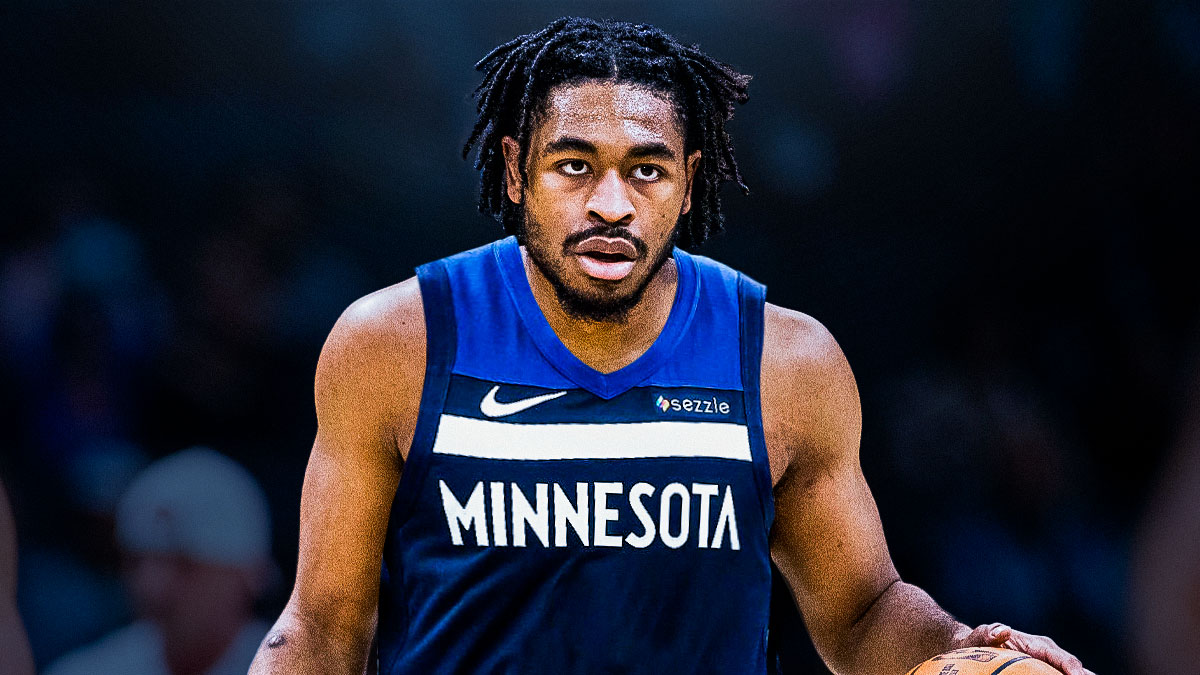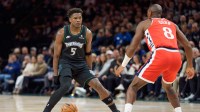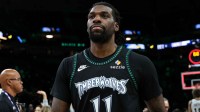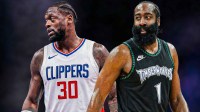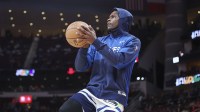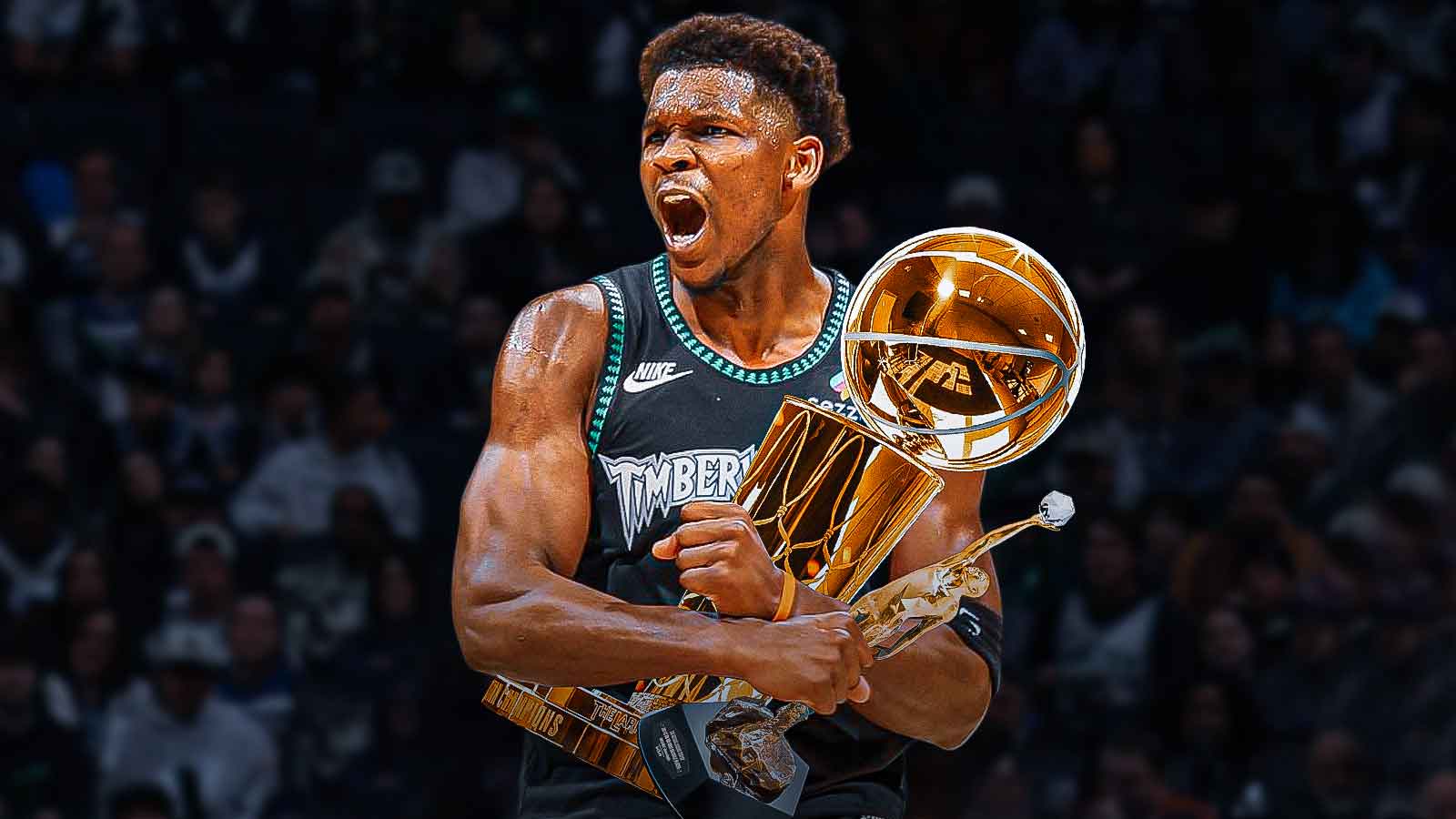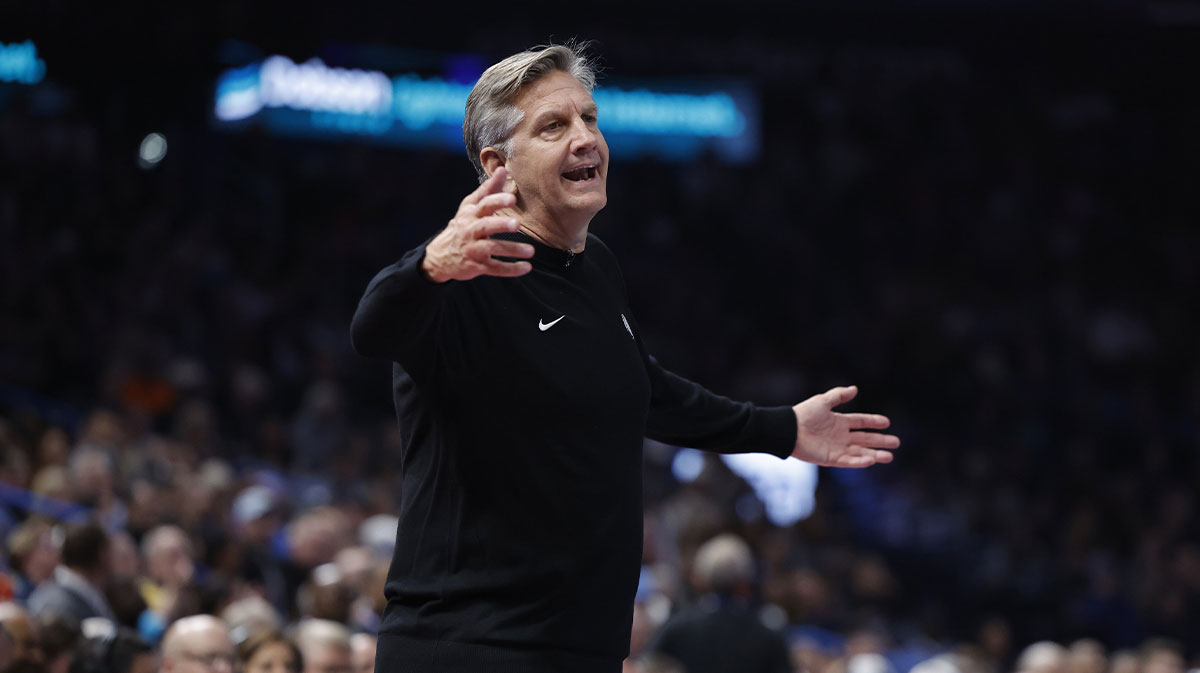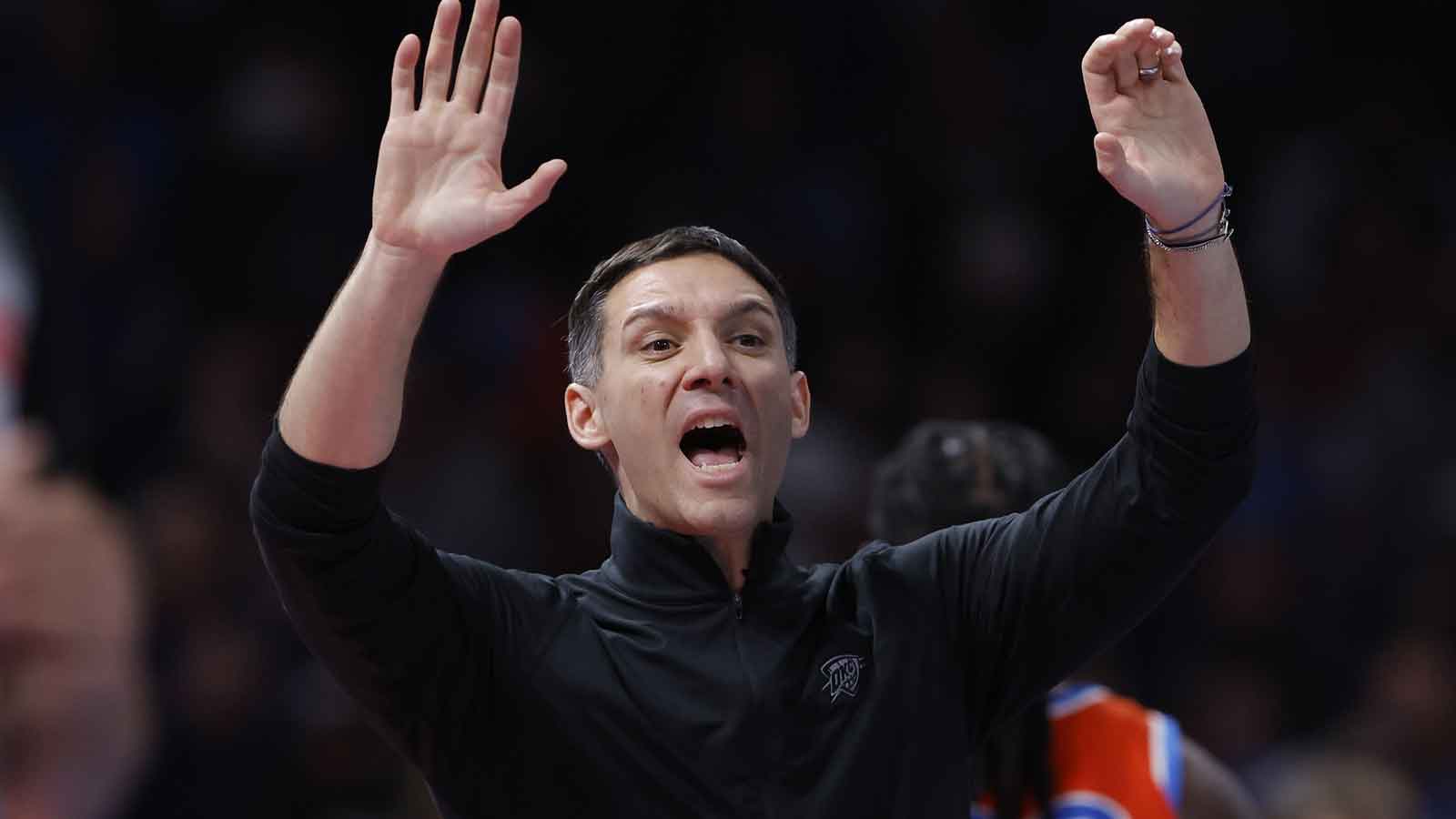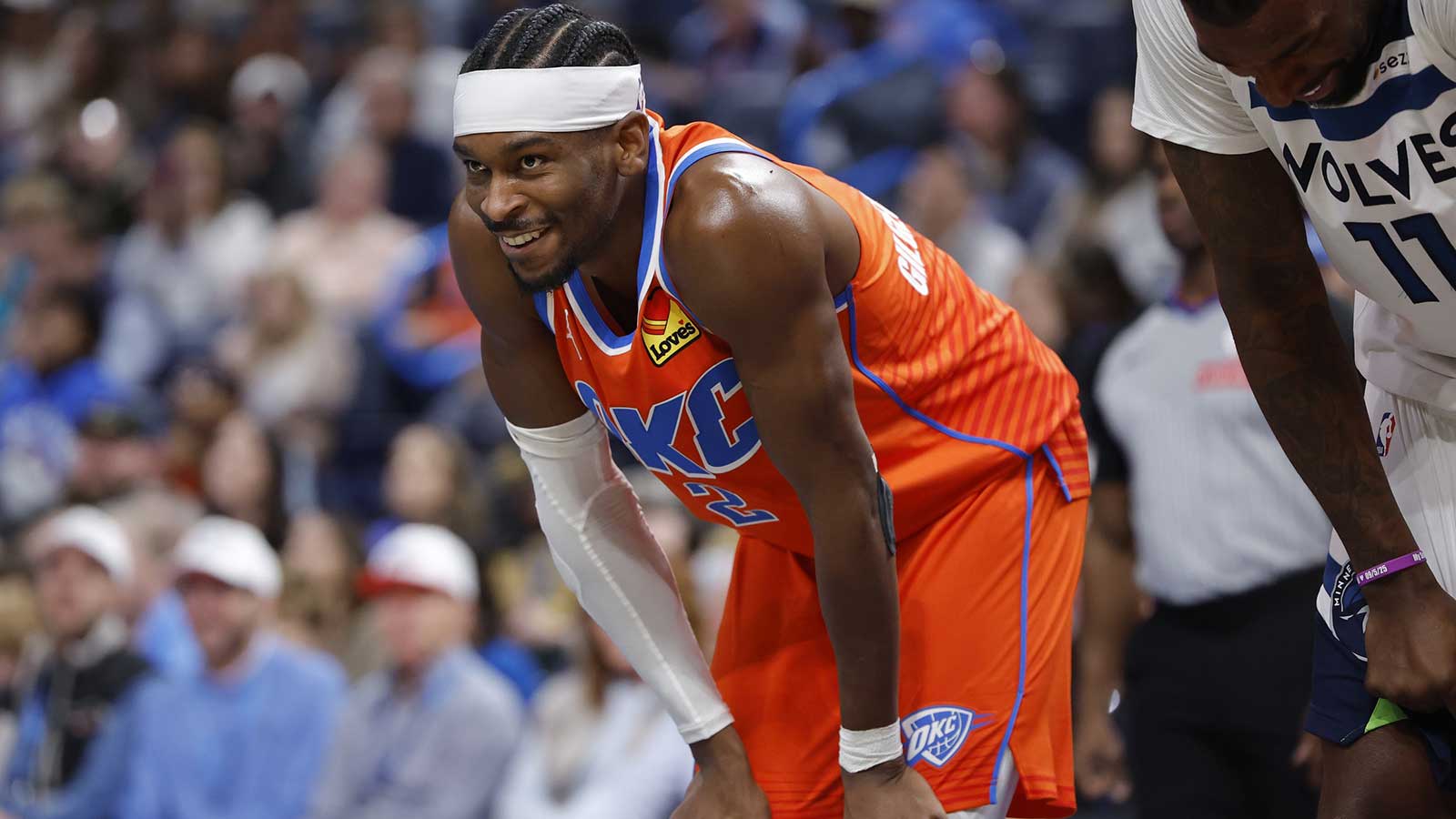The Minnesota Timberwolves walked into the 2025 NBA offseason with a promising core and a window that seemed to be opening wider. After finishing 49-33 and earning the 6th seed in the West, they had momentum. Anthony Edwards had taken the proverbial leap to superstardom. Rudy Gobert continued to anchor a top-tier defense. Naz Reid flourished in his expanded role post-Towns, finishing as a Sixth Man of the Year finalist. Even Jaden McDaniels began emerging as one of the league’s premier 3-and-D wings. Everything was trending upward, except at point guard.
The Wolves’ lack of urgency to address their glaring need at lead guard may ultimately be the defining oversight of their 2025 offseason. With Mike Conley entering his age-38 season and rookie Rob Dillingham still getting acclimated to the NBA game, the team remains dangerously thin at its most important decision-making position.
The re-signing of Joe Ingles, while sentimental, does little to address this issue. Letting go of Nickeil Alexander-Walker, a versatile defender and occasional playmaker, only compounded the problem. It’s not that the Timberwolves did nothing; it’s that they didn’t do what mattered most.
Which brings us to the one move they should’ve made: signing Cam Thomas.
Why the Timberwolves should’ve signed Cam Thomas
The Timberwolves don’t need a traditional point guard to replace Mike Conley: they need a shot creator, a bucket-getter, and someone who can take pressure off Anthony Edwards when defenses key in. Cam Thomas, now signed with another team, checked every box Minnesota failed to fill.
Fun Fact: Cam Thomas is the only player in NBA history to average 15+ PPG in under 25 career MPG. pic.twitter.com/LhwJ1pWD0E
— StatMuse (@statmuse) July 28, 2025
At just 23 years old, Thomas is already one of the most dynamic scorers in the league. In 2024-25, he averaged 24 points per game on solid efficiency, including multiple 40-point outbursts. He did so with minimal structure and few consistent touches in Brooklyn’s chaotic offense. Imagine what he could do in a more stable, playoff-caliber environment like Minnesota’s.
But scoring is just the beginning of the argument.
Offensive insurance for Conley and Dillingham
Let’s start with the obvious: Mike Conley is nearing retirement. While still valuable in spurts for his playmaking and IQ, expecting him to start 60+ games or play deep into the postseason is wishful thinking. Dillingham, though explosive, is undersized and untested. In a Western Conference stacked with elite guards, he’s not ready to carry the load just yet.
Cam Thomas would’ve provided instant offense, someone who can create off the bounce, finish at all three levels, and shift defensive coverages away from Edwards. He’s a certified shot maker, and the Wolves desperately need someone who can self-generate looks when the offense bogs down.
The ideal stagger partner for Anthony Edwards
In today’s NBA, having multiple perimeter creators isn’t a luxury; it’s a requirement. Teams need players who can thrive in staggered lineups, keep second units afloat, and exploit mismatches. Edwards is brilliant, but he can’t do it all. And the Wolves don’t want to wear him down before April.
Reminder Cam Thomas is not your average scorer 😮💨 pic.twitter.com/y3bPVu71Ry
— SleeperNets (@SleeperNets) July 22, 2025
Cam Thomas fits the role perfectly. He could start alongside Edwards in small-ball lineups or come off the bench and dominate second units. His ability to handle the ball, score in isolation, and draw help defenders would give the Timberwolves the one thing they lacked in the 2024 playoffs: an offensive pressure valve when their primary stars needed a breather.
Unlocking bench production and lineup versatility
Last season, Naz Reid was the lone bright spot off Minnesota’s bench. Beyond him, there wasn’t a consistent scorer. Ingles, even if healthy, doesn’t fix that. Without a spark plug, the Timberwolves’ second unit stagnates.
Cam Thomas would’ve transformed that dynamic. His presence allows Finch to be more creative, running two-guard sets, experimenting with three-guard lineups, or using Thomas as the primary initiator while Edwards slides to the wing. In a league built around spacing and matchup hunting, Thomas gives you options.
He doesn’t just plug a hole, he opens doors.
A manageable financial fit
Yes, Minnesota is tight on flexibility. Reid’s five-year, $125 million contract and Julius Randle’s deal eat up a significant chunk of cap space. But Thomas was available below market value. His new contract (reportedly in the $12–14 million per year range) was well within range if Minnesota had been willing to get creative, either through minor salary dumps, using exceptions, or restructuring smaller contracts.
Instead, they prioritized continuity with aging veterans like Ingles and allowed cap room to stagnate. Thomas, at just 23, would’ve been both a short-term fix and a long-term asset.
He fits the window. He fits the books. He fit the need.
What the Timberwolves did instead
Let’s recap the Wolves’ 2025 offseason:
-
Re-signed Joe Ingles to a one-year deal.
-
Did not add any notable point guard in free agency or via trade.
-
Let Nickeil Alexander-Walker walk, losing a defensive guard with playmaking upside.
-
No clear backup plan for Conley, outside of trusting Rob Dillingham’s development curve.
These are moves rooted in fear of change, not fear of failure. And for a team already feeling the squeeze of luxury tax and high expectations, that’s a dangerous game.
Standing pat in the West while teams like the Thunder, Pelicans, and even the Rockets reload? That’s not neutral. That’s moving backward.
What Cam Thomas would’ve meant in the playoffs
When the postseason arrives, defenses take away first options. We saw it last year with Minnesota. Edwards had to work too hard for every bucket, and Conley couldn’t keep up with quicker, younger guards. The result? Isolation, stagnant ball movement, and fatigue.
Cam Thomas would’ve given them a second closer: a player who can hit contested shots, pull up from deep, and make defenders pay for overhelping. In a playoff series, that matters.
He may not be a “pure point guard,” but he’s a pure bucket, and that’s exactly what the Timberwolves needed.
Minnesota let the moment pass
The Timberwolves are no longer building for the future; they’re in their window now. Anthony Edwards is ascending, Naz Reid is peaking, and Gobert still anchors a top-5 defense. This is the time to go all-in and address weaknesses before they become fatal flaws.
Instead, Minnesota chose continuity and comfort, passing on a player who could have fundamentally altered its offensive ceiling.
Cam Thomas isn’t perfect. He has defensive limitations and hasn’t always embraced a team-first mindset. But in Minnesota’s structured system, surrounded by veterans and coached by Chris Finch, he could’ve grown into the perfect secondary creator the Wolves so badly need.
The Timberwolves had the talent. They had the motivation. They just didn’t make the move.
And if this season ends the same way as the last, with Edwards doing too much and Conley running on fumes, we’ll look back at July and ask the same question:
Why didn’t they go get Cam Thomas?

